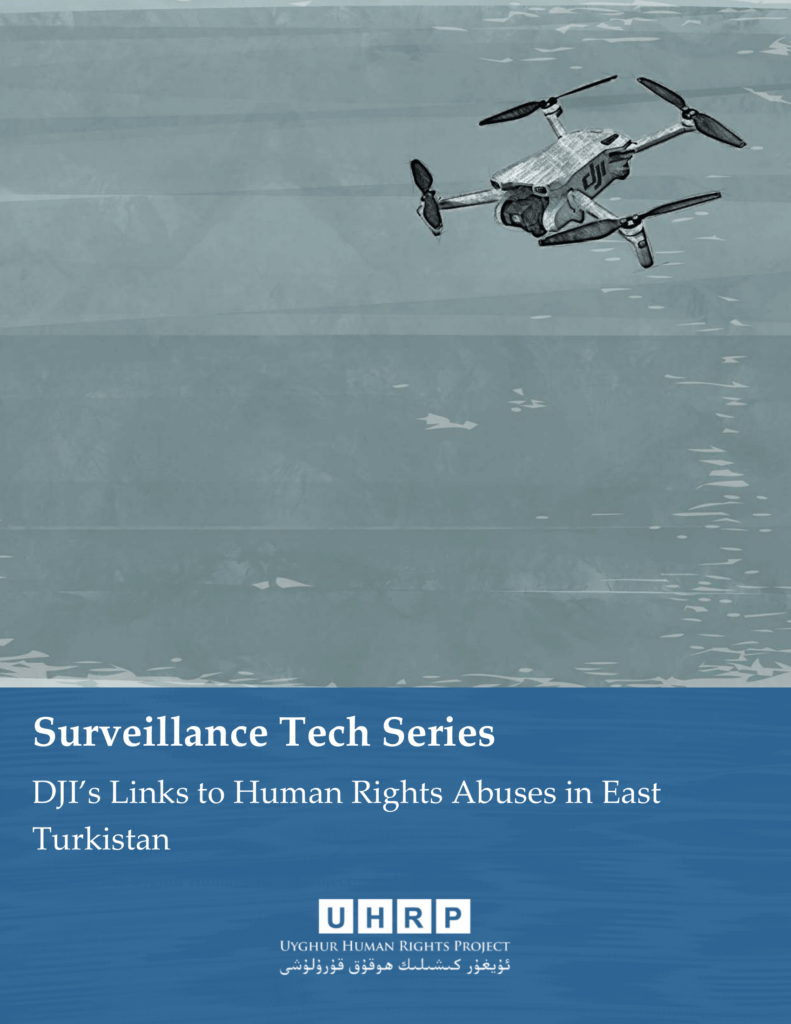End of the Road: One Belt, One Road and the Cumulative Economic Marginalization of the Uyghurs

For immediate release
March 6, 2017 10:00 am EST
Contact: Uyghur Human Rights Project +1 (202) 478 1920
A Uyghur Human Rights Project report by Henryk Szadziewski. Download the full report in English here.
End of the Road: One Belt, One Road and the Cumulative Economic Marginalization of the Uyghurs, a new research report by the Uyghur Human Rights Project (UHRP), is an examination of China’s One Belt, One Road (OBOR) economic initiative from a Uyghur human rights perspective. The report is an analytical appraisal of OBOR’s potential impact on East Turkestan and sets the initiative within the context of previous economic campaigns in the region.
“Xi Jinping has made OBOR the signature policy of his presidency. The Silk Road Economic Belt arm of OBOR puts East Turkestan squarely within China’s push for continental dominance of politics and trade. However, within all the grand policy statements we hear little about the Uyghurs, whose homeland is East Turkestan,” said UHRP Acting Director, Omer Kanat.
Mr. Kanat added: “OBOR represents the latest centrally-led economic campaign in the region that sidelines Uyghur participation in development planning. Through so called economic development, China has enacted policies repressing the Uyghur identity in order to Sinify East Turkestan and project its continental ambitions. Should any Uyghurs benefit from OBOR it will be incidental to China’s policy goals.”
Despite China’s remarkable economic growth rates since the reform inception period and several economic campaigns targeting minority regions, extreme poverty rates in western China and among Uyghurs, Tibetans. Mongolians and other ethnicities lag far behind those of eastern China, where the majority Han Chinese reside.
In a speech delivered at Nazarbayev University in Kazakhstan in September 2013, Chinese president Xi Jinping advanced the Silk Road Economic Belt (SREB), a trade proposal encompassing South Asia, Central Asia, Eurasia, Europe and the Middle East that would augment the role of East Turkestan as China’s primary land gateway to Eurasia. The SREB aims to integrate these regions through infrastructure and trade with China underwriting the costs of necessary construction. According to a state policy document, East Turkestan would serve “as a core area on the Silk Road Economic Belt.”
The SREB and the Maritime Silk Road (MSR) form an ambitious Chinese goal to place China at the center of trade routes in the eastern hemisphere. Collectively known as One Belt, One Road (OBOR), the initiative projects external influence and upholds the internal economy that according to one observer set out to establish China as a bona fide super power.
The announcement of the SREB is the latest iteration of centrally driven development campaigns in East Turkestan since the fall of the Soviet Union. These initiatives have included Open up the Northwest (1992), Western Development (2000), the Xinjiang Work Forums of 2010 and 2014, the establishment of the Shanghai Five (1996) and later the Shanghai Cooperation Organization (2001). The build up of infrastructure, investment and migration encouraged by these initiatives have done little to significantly alter economic opportunities for Uyghur, as they remain outside the planning, implementation and monitoring processes while their region undergoes transformation. While China is often quick to claim it successes in raising large numbers of citizens out of poverty, it remains less vocal about how inequitable this change has become.
New economic initiatives in East Turkestan signify familiar exclusions for the Uyghurs. UHRP has previously reported on the effects of economic marginalization among Uyghurs throughout Beijing’s interventions in East Turkestan. Compelling evidence on joblessness and lack of opportunity is recapped in this analysis to demonstrate the scant progress economic development campaigns have had on Uyghurs since the fall of the Soviet Union.
In prior research, restated in this work, UHRP has asserted how state led economic development merely represents a form of Uyghur displacement. A form that takes place in situ, rather than a process involving mass removal. In situ displacement has arisen due to the promulgation of economic development campaigns that do not contain any measures for control by the titular population of the autonomous region. Such an exclusionary approach has encouraged migration and greater state intrusions into Uyghur life. UHRP believes OBOR exhibits no change in approach from Beijing to stimulating economic development in East Turkestan. Familiar patterns in which Uyghur rights to participation in the development process remain violations under international standards.
The redevelopment of Uyghur neighborhoods, particularly in Kashgar, under Chinese development campaigns is a physical manifestation of the compression felt in Uyghur society and cultural life. As the physical appearance and demographics of urban East Turkestan becomes less distinguishable from eastern China, Uyghur residents will occupy the same spaces, but without the organic arrangement the redeveloped areas once embodied. In essence, the tangible aspects of Uyghur culture and civilization are under process of destruction under an unquestioned narrative of “development.”
However, it is not only Uyghur culture, language, traditions and ethnic identity that is under threat. If OBOR succeeds, there are minorities in neighboring countries, such as the Balochs in Pakistan, who will face similar challenges. Given such outcomes, UHRP concludes development campaigns serve national and party needs to consolidate territorial control of East Turkestan and assimilate Uyghurs into the dominant culture of China while projecting Chinese influence into the Eurasian continent.
UHRP calls on multilateral agencies, such as the United Nations, to recognize in human rights standards the problematic issue of demographic change engineered by state led development campaigns. Governments and private sector entities enticed by the opportunities presented by OBOR, particularly in East Turkestan and other minority regions, should demonstrate their engagement meets international human rights standards and benefits the Uyghur people in the region.
FEATURED VIDEO
Atrocities Against Women in East Turkistan: Uyghur Women and Religious Persecution
Watch UHRP's event marking International Women’s Day with a discussion highlighting ongoing atrocities against Uyghur and other Turkic women in East Turkistan.



